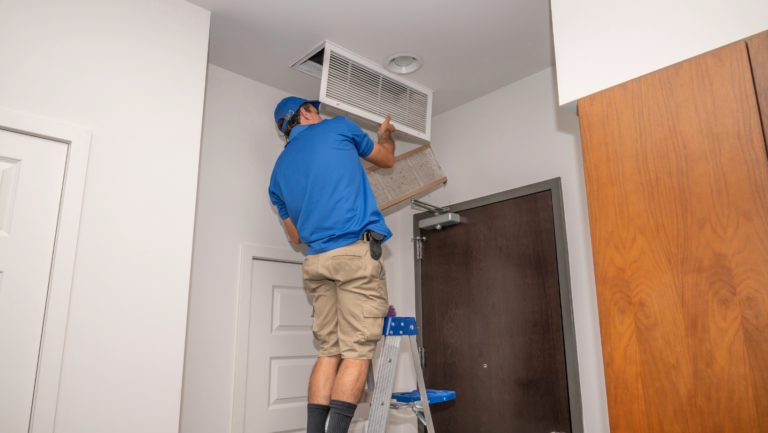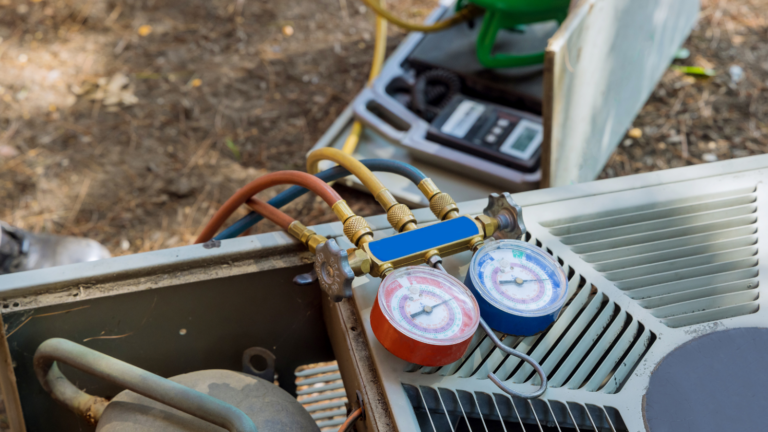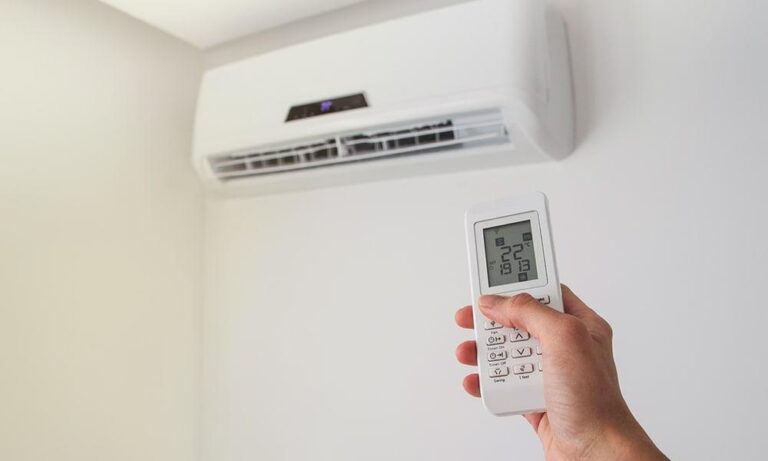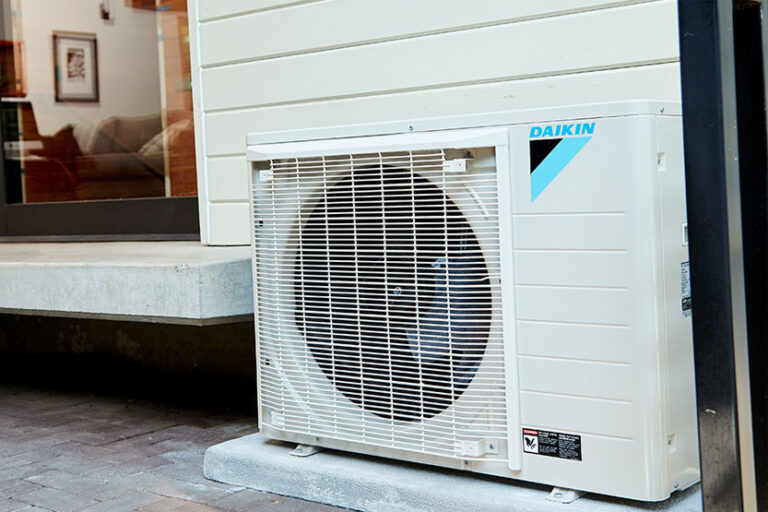HVAC Noise Reduction Techniques: Professional HVAC Tips
Summary
Read our HVAC noise reduction techniques provided by HVAC professionals to create a quieter and more comfortable indoor environment.
Is your HVAC system louder than it should be? Unwanted noise like buzzing and banging, can be annoying and disruptive.
Most HVAC noise comes from parts like fans, blowers, compressors, or ducts. If ignored, it can point to bigger problems like loose parts or poor installation that cost more to fix later.
Identifying the Sources of HVAC Noise
To reduce HVAC noise effectively, you first need to understand where it’s coming from and how loud it really is. Different parts of your system produce different sounds, and each has a typical decibel (dB) range:
- Blower and fan noise typically measure between 50–70 dB, similar to the sound of a conversation or background office noise.
- Compressor noise is usually louder, ranging from 80–100 dB, closer to the volume of a garbage disposal or heavy traffic.
- Ductwork noise often falls in the 60–80 dB range, depending on airflow and whether the ducts are loose, thin, or uninsulated.
Measuring Noise and Vibration
To measure the noise levels in different parts of your HVAC system, you can use:
- Decibel meters such as the Extech 407730
- Smartphone apps like NIOSH Sound Level Meter)
These tools help you pinpoint loud components, identify spikes, and compare readings against acceptable ranges.
You can also use vibration analyzers, like the Fluke 805 FC, to detect and assess HVAC vibration issues that may not be audible but still contribute to long-term noise and equipment damage.
These tools measure frequency and intensity, helping identify problems with motors, fans, or mounting that could lead to louder operational noise if left unchecked.
NC and RC Ratings
ASHRAE (American Society of Heating, Refrigerating and Air-Conditioning Engineers) provides useful noise guidelines using NC (Noise Criteria) and RC (Room Criteria) ratings. These ratings help define acceptable indoor sound levels based on usage.
For example, ASHRAE recommends keeping bedrooms at NC 25–30 and offices under NC 40. If your HVAC system exceeds these ratings, it may need tuning, repair, or upgrades to meet quiet HVAC solutions standards.
At Beam Airflow, we specialize in diagnosing and fixing HVAC noise issues with precision. Whether it’s vibration control, duct adjustments, or system upgrades, our team helps you achieve a quieter, more comfortable space.
SPEAK TO A QUALIFIED TECHNICIAN
Step-by-Step Guide to Diagnosing HVAC Noise
Diagnosing HVAC noise takes a focused approach. Here’s how to do it step by step:
Step 1: Measure the decibel level with a sound level meter.
Place a sound level meter near the vents, the air handler, and the compressor. Take multiple readings during system operation. Sounds above 70 dB in living spaces may indicate a problem.
Step 2: Use a vibration analyzer to identify mechanical noise.
Use a tool like the Fluke 805 FC to detect subtle HVAC vibration issues. Check motors, fans, and compressors. Unusual vibration patterns often point to worn bearings, loose mounts, or imbalanced parts.
Step 3: Inspect ducts visually for obstructions or leaks.
Look for visible gaps, loose fittings, or collapsed sections. Rattling noises often come from unsecured ducts, while whistling sounds could mean air is escaping through small leaks or cracks.
Step 4: Compare readings with ASHRAE guidelines.
Use ASHRAE’s NC (Noise Criteria) or RC (Room Criteria) charts to determine if your system meets recommended sound levels. For example, bedrooms should stay under NC 25–30. Readings above those levels may justify repairs, insulation, or upgrades for better HVAC noise control.
By following these steps, you can isolate the source of the noise and take action toward quiet HVAC solutions.
DIY HVAC Noise Reduction Techniques
1. Install Sound Blankets Over Compressors
Sound blankets, also known as compressor blankets, are a great way to reduce noise quickly and affordably.
The main advantage is their effectiveness, reducing noise by up to 65% without affecting performance when installed on the average HVAC system. They are designed to insulate the compressor and prevent its loss of heat. These are simple to install and can be a cost-effective solution for homeowners.
However, they may not be compatible with every unit, and poor installation can trap heat if not done correctly.
2. Use Anti-Vibration Pads
Placing anti-vibration pads under HVAC units can help absorb vibrations and reduce noise. These pads are made of materials like rubber or cork and are easy to install without professional help.
The downside is that they mostly help with vibration-related noise, so if your issue comes from airflow or mechanical faults, they won’t fix the root problem.
3. Seal Duct Leaks
Air leaks in ducts can cause noise due to escaping air. You can reduce these leaks by stiffening up your ducts, adding foam baffles to the walls, or using gaskets and other sealing products to prevent air from escaping.
The tradeoff is that it takes time to inspect and seal all affected areas properly, and not all duct noise comes from leaks.
4. Replace or Clean Air Filters
Dirty or clogged air filters can cause the HVAC system to work harder, increasing noise. Regularly replacing or cleaning filters can help maintain optimal airflow and reduce noise levels.
However, it won’t do much for mechanical or structural noise, so it should be combined with other solutions if the noise persists.
5. Install Acoustic Duct Liners
Inserting acoustic duct liners inside the ductwork can absorb sound and reduce noise levels. These liners are typically made from fiberglass or other sound-absorbing materials.
The downside is that they can be harder to install, often requiring partial disassembly of the duct system or professional assistance.
For more reliable home upgrades and energy-saving tips, partner with professionals who understand the details. Beam Airflow can help you make smart, cost-effective decisions that keep your home comfortable and efficient.
SPEAK TO A QUALIFIED TECHNICIAN
Professional HVAC Noise Reduction Solutions
1. Upgrade to Quieter HVAC Equipment
Older HVAC systems may be noisier due to outdated technology or wear and tear. Upgrading to newer, quieter models can significantly reduce noise levels.
2. Install Sound Attenuators
Sound attenuators, or duct silencers, are devices designed to reduce noise transmission through ductwork. They are typically installed near noisy equipment and require professional installation to ensure effectiveness.
3. Implement Variable Speed Drives
Variable speed drives can adjust the speed of HVAC fans to match the required airflow, reducing noise associated with high-speed operation. Installing these systems requires professional expertise.
4. Construct Acoustic Enclosures
Building soundproof enclosures around noisy HVAC equipment can contain and reduce noise. These enclosures are designed specifically to absorb sound and prevent it from spreading, making them an excellent solution for noisy HVAC systems near living spaces.
5. Optimize System Design
Ensuring that your HVAC system is properly designed and sized can prevent noise issues. Professionals can perform load calculations and system assessments to ensure optimal performance and minimal noise.
Why HVAC Noise Reduction Matters for Long-Term Comfort
Reducing HVAC noise can make a big difference in your living or working spaces. Focusing on proper design, installation, and regular maintenance can prevent many noise issues from the start.
Advanced solutions, like upgrading to quieter components and using noise-canceling technologies, can tackle more persistent noise problems.
The benefits are substantial and undeniable. Just think about enjoying a quieter, more comfortable environment where the noise never disrupts your daily activities or sleep.
Whether you opt for simple DIY fixes or professional help, focusing on noise reduction is an important step that ensures long-term comfort and savings.










